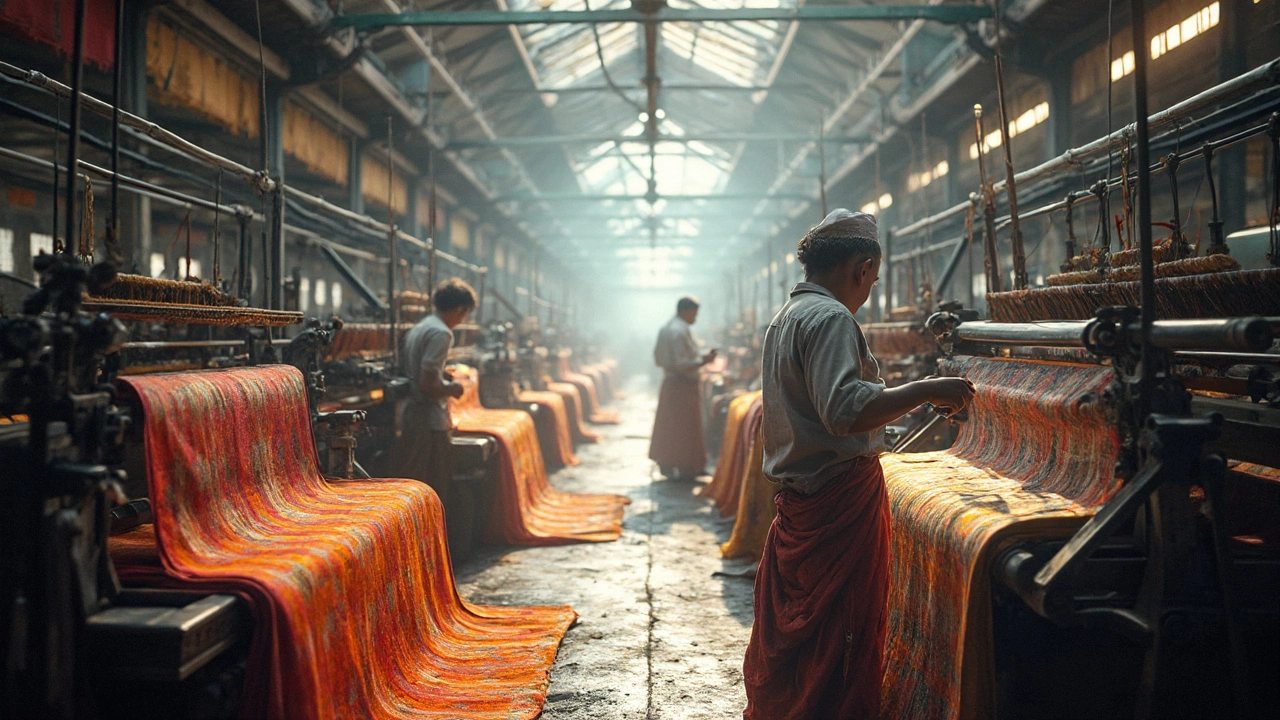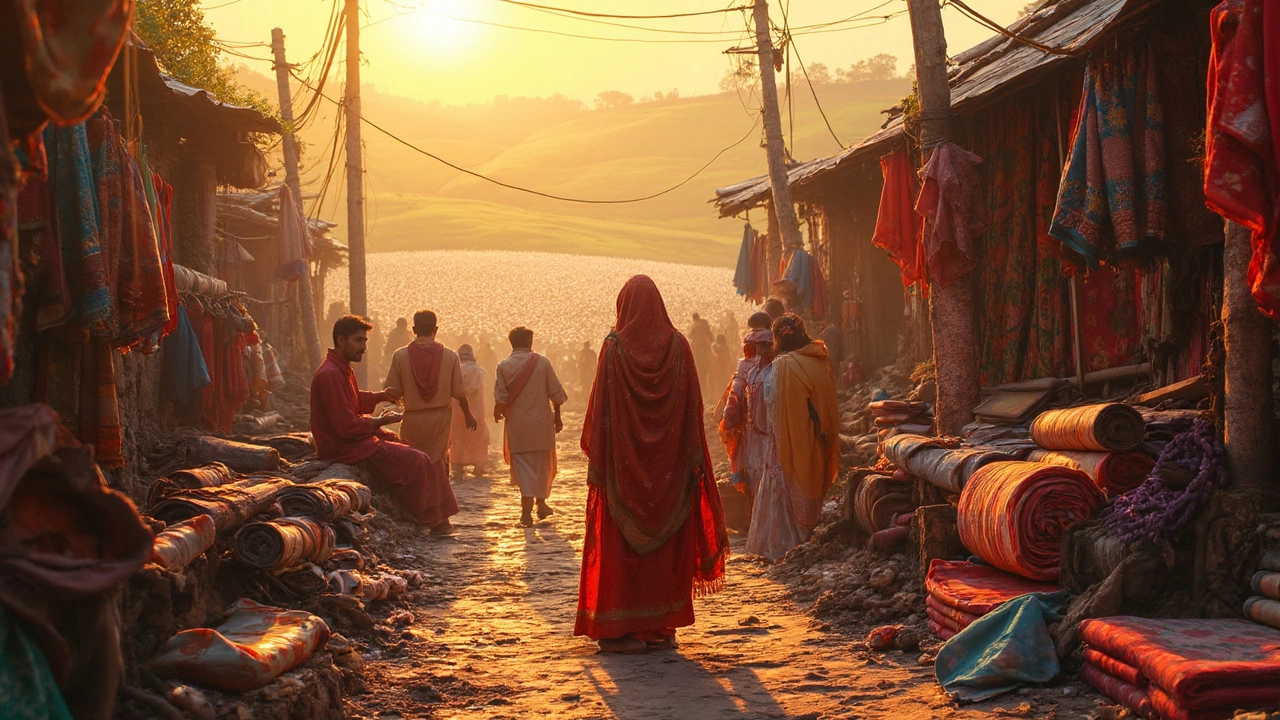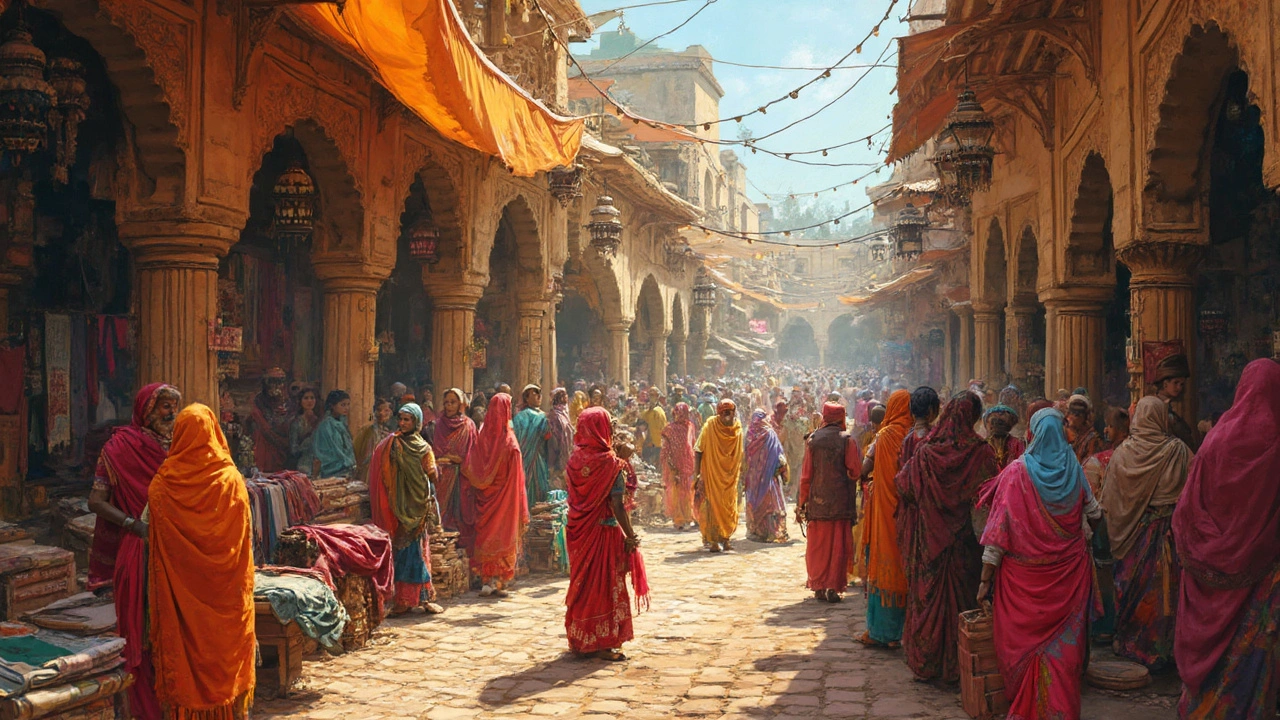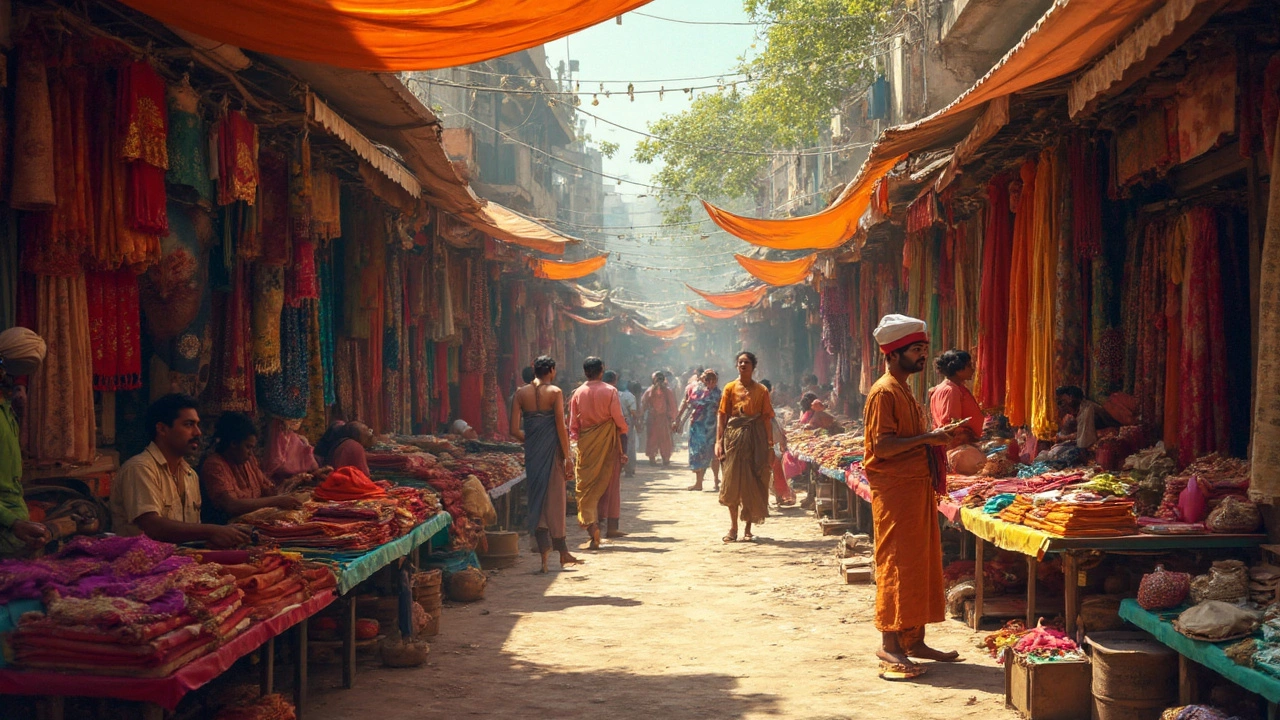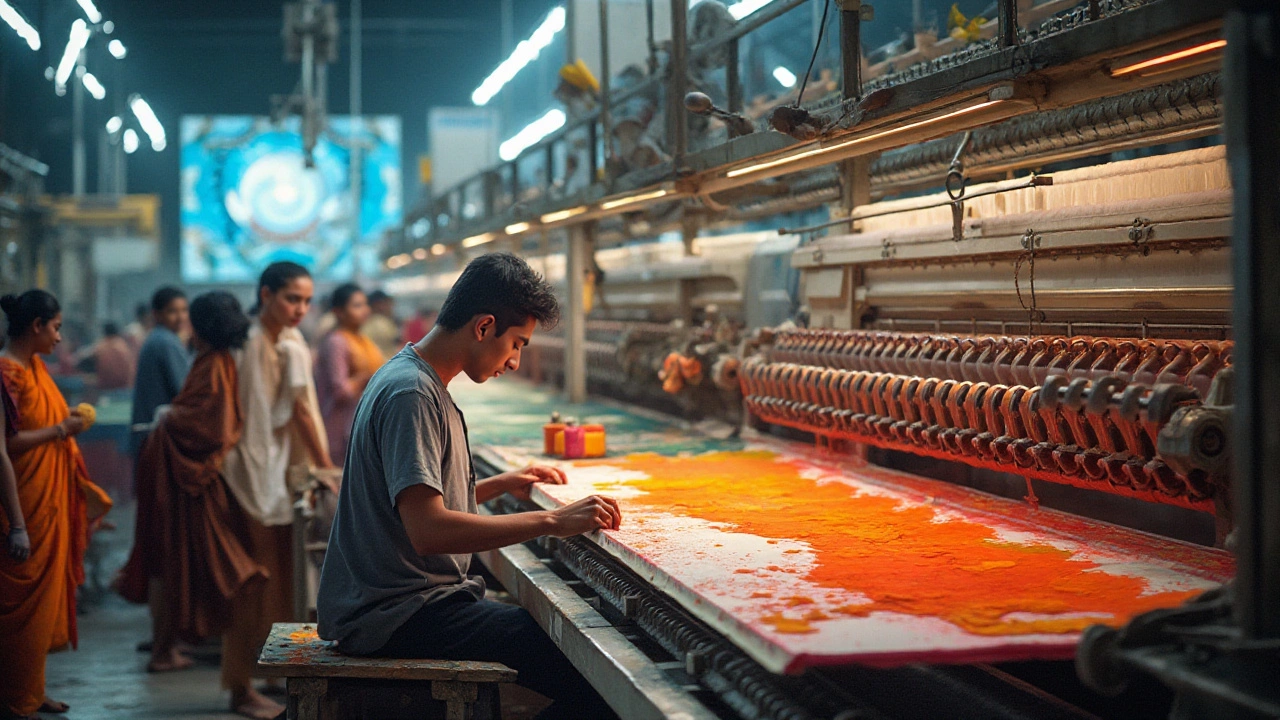Textile Manufacturers in India – What You Need to Know
If you’re hunting for a fabric partner, India should be at the top of your list. The country churns out more cotton, silk and synthetic yarn than most places, and its factories ship to fashion houses around the globe. That means you can find everything from cheap basics to high‑end designer fabrics under one roof.
Why India Leads the Textile Game
First off, the workforce is huge and skilled. Millions of people work on looms, stitching lines and dye houses, so you get speed and flexibility. Second, raw material is right there – the nation grows cotton in Gujarat and Maharashtra, and it has spice‑rich dye sources that make colors pop. Third, the main hubs (Surat, Tirupur, Delhi, and Bengaluru) specialize in different segments: Surat dominates polyester and synthetic blends, Tirupur is famous for knitwear, while Delhi handles fine cotton and handloom pieces.
Because of these factors, Indian manufacturers can handle small orders for startups and massive runs for big brands. You’ll also notice that many factories have upgraded to modern tech – automated weaving, computer‑controlled cutting and eco‑friendly water‑recycling systems. That mix of tradition and tech keeps costs competitive while still meeting quality benchmarks.
How to Pick the Right Manufacturer
Start with a quick google search and a look at trade portals, but don’t stop there. Ask for sample swatches to check texture, colour fastness and stitching. A reliable supplier will be happy to send a few pieces at a low cost or even for free.
Check certifications. ISO 9001 shows a solid quality system, while Oeko‑Tex or GOTS (for organic fabrics) tells you the factory follows environmental rules. If sustainability matters to you – and it probably does – look for factories using low‑water dyeing or solar power.
Communication is another make‑or‑break factor. Choose a partner who replies quickly, understands your design sketches and is transparent about lead times. A short phone call or video chat can reveal a lot about their professionalism.
Once you shortlist, arrange a virtual or in‑person factory tour. Seeing the production line, talking to floor managers and checking hygiene standards builds trust. If a visit isn’t possible, ask for a detailed video walkthrough and references from past clients.
When you negotiate, be clear about payment terms, minimum order quantities (MOQs) and after‑sales support. Many Indian factories are flexible on MOQs for new customers, especially if you promise repeat business. Also, clarify who handles customs paperwork if you’re importing – a good supplier will either guide you or recommend a reliable freight forwarder.
Finally, test the partnership with a small batch. Track how the sample moves from order to delivery, watch for any quality hiccups and note how the supplier reacts. If everything runs smooth, you can scale up with confidence.
In short, India offers a mix of volume, variety and value for textile buyers. By doing a bit of homework – checking certifications, requesting samples, and confirming communication – you’ll land a manufacturer that fits your style, budget and timeline.
Who is the King of Textiles? India's Manufacturing Giants Uncovered
The Indian textile industry stands as a powerhouse, fueling global fashion, home furnishings, and technical fabrics. This article digs deep into who wears the crown among India's textile manufacturers, offering facts, tips, and real industry insights. Get to know why India’s textile sector matters, which companies lead the pack, and what factors keep them ahead in the global market. Whether you're curious about India's textile success story or looking for sourcing tips, we've got real talk and practical info. This is your straight-shooter's guide to the kingpins of Indian textiles.
Textile Industry Boom in India: Is It Coming Soon?
The Indian textile industry is showing strong signs of major growth, but will it actually boom soon? This article explores current trends, government moves, real-world challenges, and what makes India unique in global textiles. Get insights on how India's cotton fields, skilled workers, digital upgrades, and export power are shaping the game. This read is packed with facts, tips, and real context for anyone curious about textile manufacturers in India.
India New Textile Policy Explained: What Manufacturers Need to Know Now
India’s new textile policy is shaking things up for manufacturers across the country. This article breaks down the key changes, from export targets and government incentives to sustainability moves. You'll get hands-on tips for adapting to new rules and staying competitive. If you’re in the textile game or thinking about joining, this is the breakdown you’ll want to read. The new roadmap could change how you do business.
Largest Textile Industry in India: Exploring Top Players
India's textile industry is a massive player globally, fueled by a rich history and diverse production capabilities. The largest textile manufacturers have become giants not just due to their production capacity but also their innovation and adaptability. From traditional fabrics to modern technology-driven textiles, the top companies are leading in exports and innovation. Understanding who dominates this industry provides insights into market trends and future directions.
Where Designers Source Fabric in India
Discover where India's top designers shop for fabric, exploring bustling markets, textile hubs, and hidden gems. This guide delves into the vibrant world of Indian textiles, uncovering the best sources from traditional markets to modern fabric manufacturers. Learn practical tips on navigating these locales and making informed choices. Whether you're a seasoned designer or new to the scene, this article equips you with valuable insights and insider knowledge for sourcing quality fabric. Get ready to dive into the colorful and diverse world of Indian textiles.
Current Landscape of India's Textile Industry: Challenges and Opportunities
The textile industry in India is facing a transformative phase with both challenges and opportunities shaping its current landscape. As one of the largest sectors contributing to employment and GDP, it is significant in the global textile market. The integration of technology and sustainable practices are key trends influencing the industry. However, obstacles such as fluctuating raw material costs and international competition remain. Understanding these dynamics can provide insights for stakeholders and potential investors.
